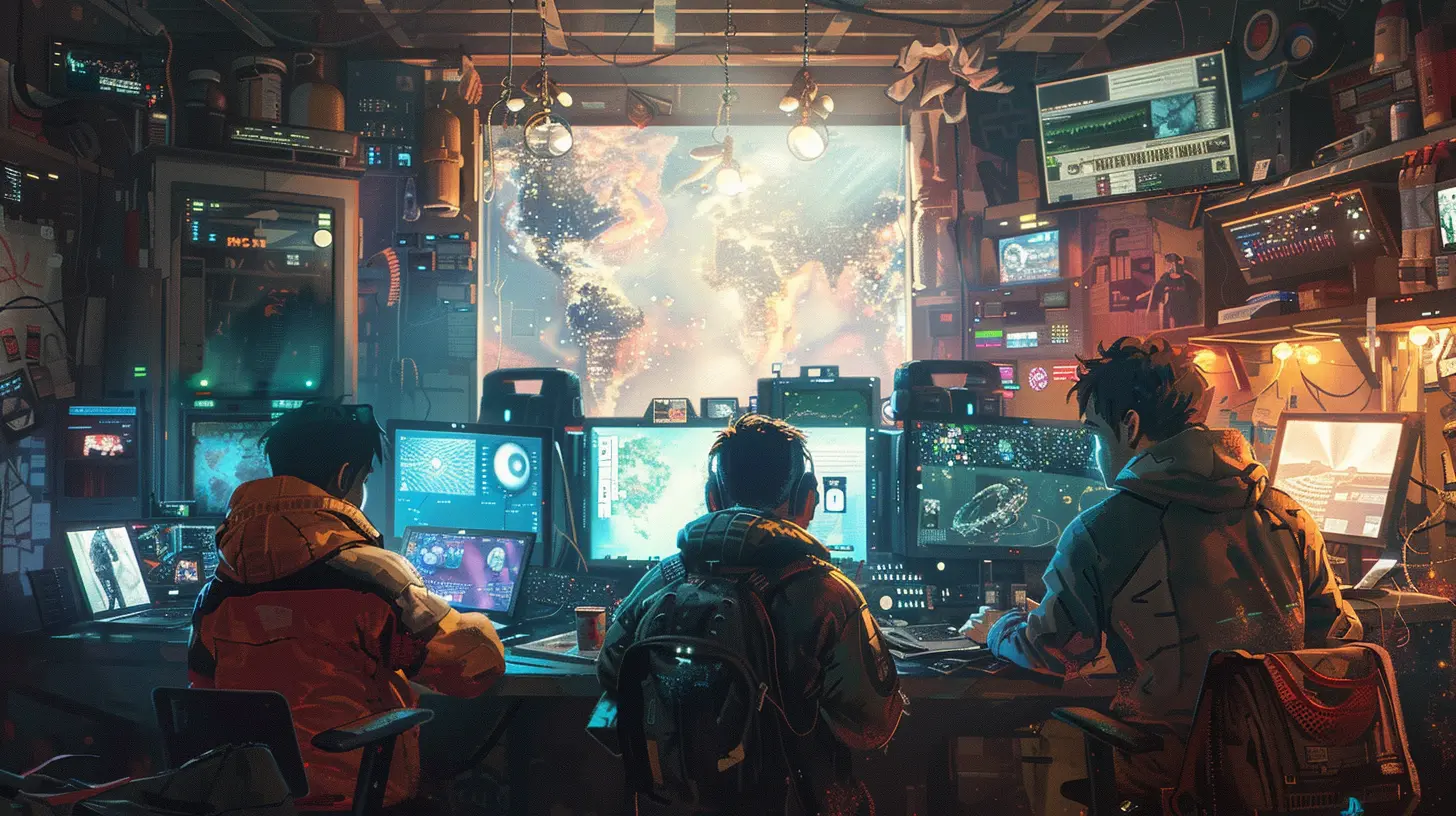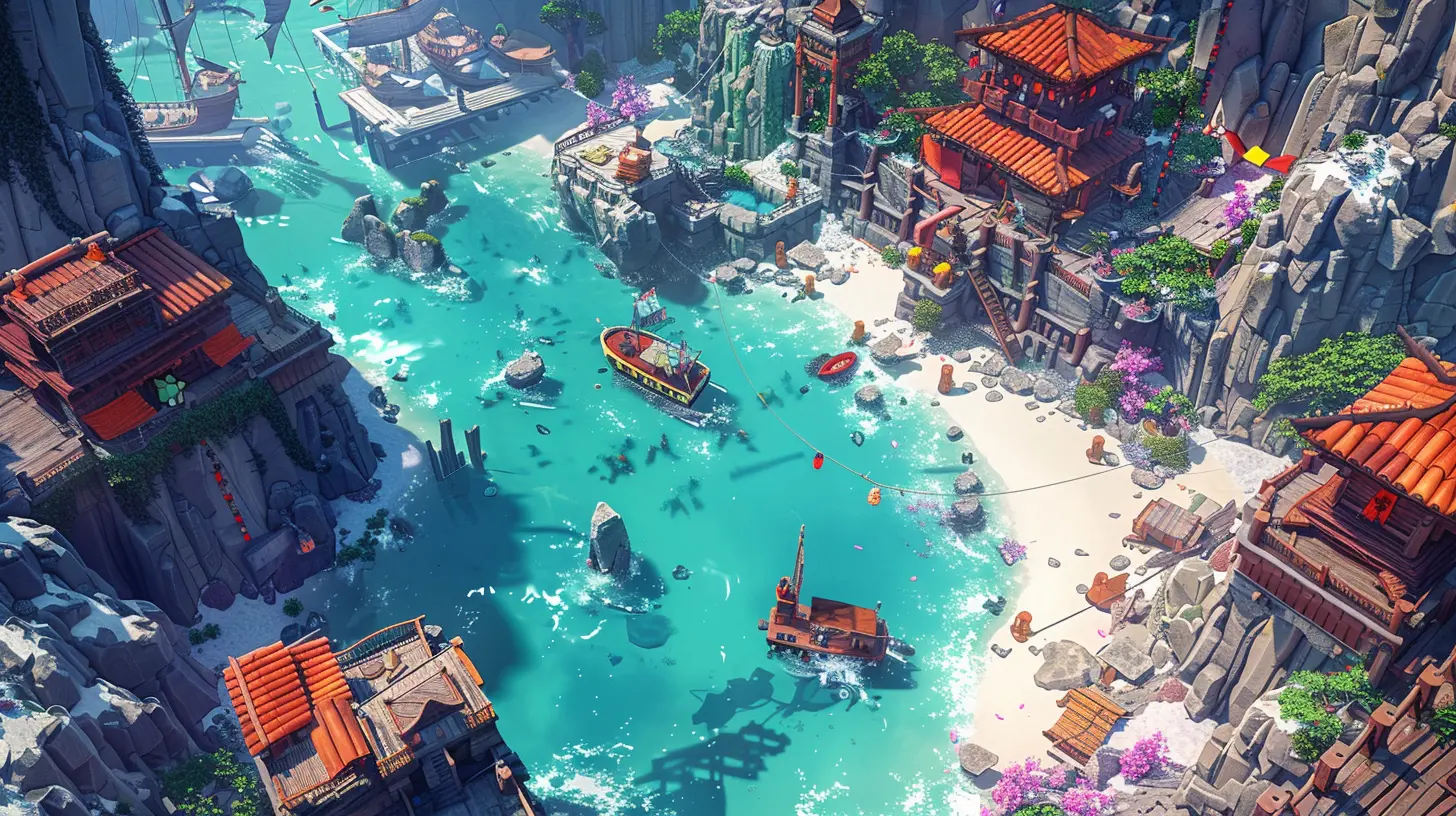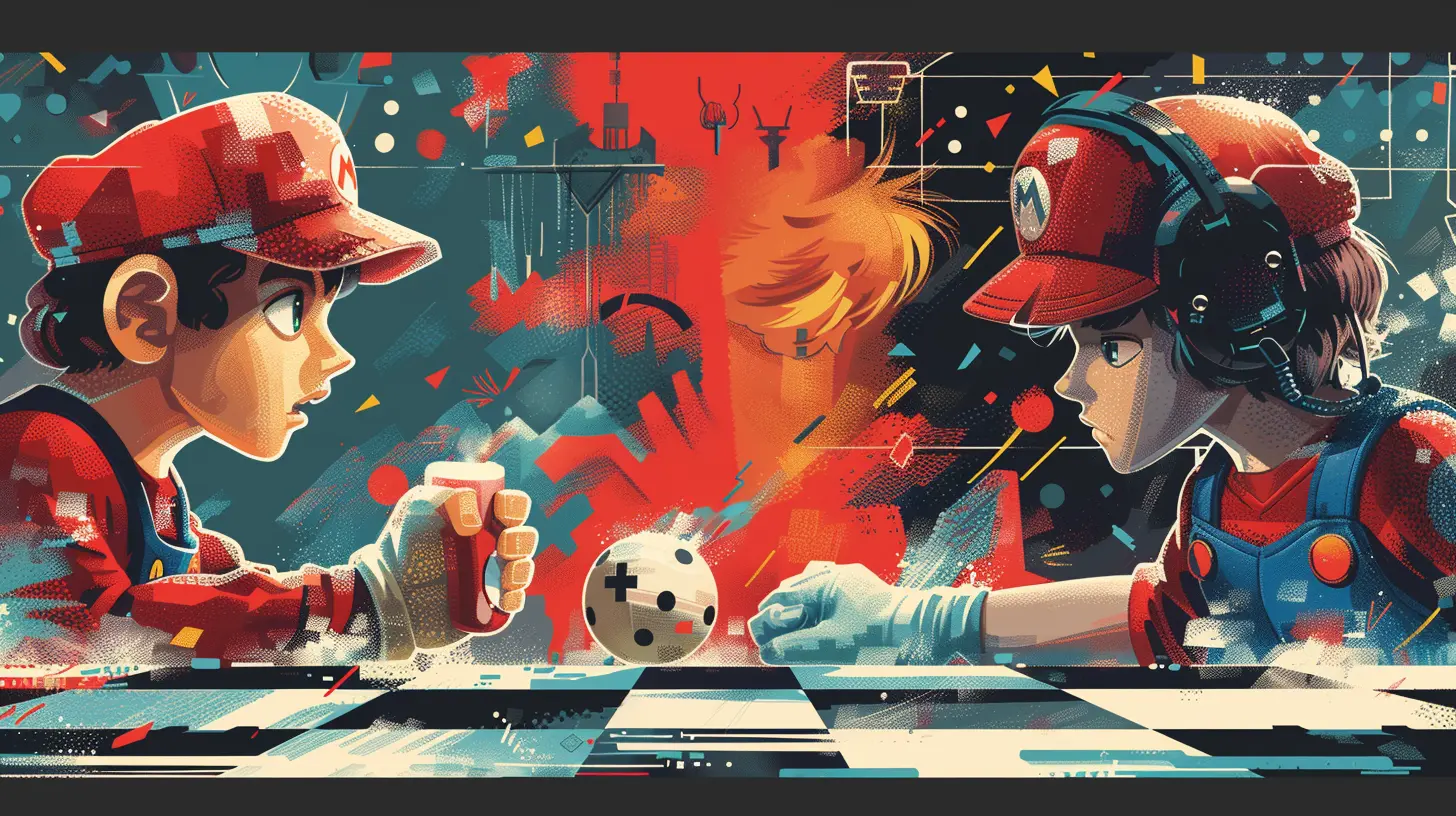How to Design Multiplayer Games That Foster Cooperation and Competition
14 May 2025
Designing multiplayer games that strike the perfect balance between cooperation and competition is no easy feat. It’s kind of like trying to bake a cake that’s sweet and salty at the same time. You want to ensure players feel the thrill of besting their opponents while also experiencing the satisfaction of working together toward a common goal. Sounds like a lot, right? Don’t worry, we’re breaking it all down into manageable chunks.
Let’s dive into the nitty-gritty details of how you can design multiplayer games that resonate with players, encourage teamwork, and fuel competitive rivalries without making it feel like a chaotic free-for-all.
Why Cooperation and Competition Go Hand in Hand
At first glance, cooperation and competition might seem like total opposites—yin and yang, cats and dogs. However, in the world of multiplayer gaming, they can complement each other beautifully when done right. Think about some of the most iconic multiplayer games out there: "Among Us," "Overwatch," even "Mario Party." They all thrive on a mix of working together with others and battling it out to come out on top.Now, why does this blend work so well? Because it taps into our psychological needs. People love being part of a team, but they also love showcasing their skills. When you combine these elements, you create experiences that are engaging, dynamic, and—most importantly—fun. So, how do we achieve this as game designers? Buckle up, because that’s what we’re about to unpack.
Key Principles of Designing Multiplayer Games
Before jumping into the specifics of fostering cooperation and competition, let’s lay out a few universal principles. These will serve as the foundation for your game design:1. Clear Goals: Whether it's capturing a flag, winning a race, or finally defeating that annoying raid boss, players need to know what they're working toward. Clarity is everything.
2. Balance is Key: No one likes a game where one strategy or playstyle completely dominates. Balance ensures both cooperation and competition are meaningful.
3. Rewards and Incentives: People are motivated by rewards. Give players reasons to collaborate and compete, whether it’s XP, loot, or bragging rights.
4. Fairness: This is a big one. If players feel cheated—by mechanics, matchmaking, or teammates—they’ll bounce faster than a rubber ball at a trampoline park.
With these principles in mind, let’s move on to actionable tips for embedding cooperation and competition into your game.
1. Create Game Modes That Naturally Blend Both
One of the easiest ways to encourage cooperation and competition is through game modes designed to require both. For instance:- Objective-Based Modes: Think capture-the-flag or zone control. These modes force players to work as a team to achieve objectives, but often, individuals get to shine by outperforming in specific roles.
- Asymmetric Gameplay: Assign players different roles or skill sets that require them to rely on each other while also competing to see who executes their role the best. Games like "Dead by Daylight" are great examples of this.
- Team vs. Team Formats: Two or more teams working against each other inherently fosters both cooperation (within teams) and competition (between teams). Classics like "Team Fortress 2" thrive on this format.
Your goal here is to give players opportunities to shine individually within the context of a cooperative setup. This creates layers of engagement and keeps things interesting.
2. Design Meaningful Roles and Responsibilities
People like feeling useful. It’s human nature. That’s why adding distinct roles in your game is such a powerful way to cultivate cooperation. Think about games like "Overwatch." Every character serves a distinct function—healer, tank, damage-dealer—so players have to communicate and coordinate to succeed.But here’s the kicker: Roles can also fuel competition. For example, two healers on the same team might find themselves competing to see who can do their job better. This kind of "friendly" competition spurs engagement without undermining teamwork.
When designing roles, keep these tips in mind:
- Make roles visually and mechanically distinct. Let players “own” their role.
- Allow for flexibility. Give players ways to switch roles or adapt their gameplay style.
- Incentivize role mastery with stats, rewards, or bragging rights.
3. Use Game Mechanics That Encourage Collaboration
Sometimes, the mechanics themselves can push players toward collaboration. Let’s say your game involves solving puzzles or taking down powerful enemies. You can design these moments so they’re impossible to complete alone. For example:- Synergy Abilities: Skills that work better when used in combination with others. Think of a fire attack that becomes more powerful when paired with someone casting oil.
- Shared Resources: Provide resources—ammo, healing items, buffs—that teams must manage together. Players are less likely to go rogue if they’re dependent on their teammates to survive.
- Team-Based Objectives: Require actions from multiple players to achieve goals. For instance, unlocking a door that needs two switches pressed at once, or lifting a massive object that requires teamwork.
These mechanics nudge players to work together while leaving room for competitive elements, like who gathers the most resources or executes teamwork-based maneuvers best.
4. Introduce Friendly Rivalries
Let’s face it: A little trash talk can make games more fun. Friendly rivalries light up competitive spirits without breeding toxicity. To encourage this, you can:- Track Stats and Leaderboards: Display individual contributions to the team’s success. For example, "You captured 3 points!" or "You healed the most players this match!"
- MVP Recognition: Reward individual excellence with post-game accolades. Giving players a moment in the spotlight is a simple way to stoke competition.
- Dual Metrics: Track and reward both cooperative achievements (like most assists) and competitive ones (like most eliminations).
The key here is to frame competition as playful and positive—celebrate achievements without tearing others down.
5. Avoid Toxicity by Promoting Positive Behavior
Here’s the elephant in the room: Competition can sometimes get ugly. No one wants their game to turn into a breeding ground for toxicity. That’s why fostering a positive environment is so important. Here’s how:- Reward Teamwork Over Individualism: While it’s great to celebrate solo achievements, the game should ultimately reward working together. This keeps egos in check.
- Implement Chat Filters and Reporting Tools: Let’s nip toxicity in the bud, shall we? Ensure players can report bad behavior and feel safe while gaming.
- Create a Culture of Encouragement: Little design quirks—like allowing players to “commend” others for a great match—make a huge difference in player interactions.
A healthy community is just as important as the gameplay mechanics themselves—don’t overlook it!
6. Adapt to Player Skill Levels
One common pitfall in multiplayer games is mismatched skill levels. Nobody wants to play on a team where one player is carrying everyone else, or worse, holding the team back. To avoid this:- Implement Skill-Based Matchmaking: Pair players with others of similar skill levels to ensure fair competition.
- Adaptive Challenges: Scale difficulties in cooperative challenges based on the players' experience levels.
- Support Learning Players: Provide tools like tutorials, tips, or even mentor systems so newer players can keep up with veterans without feeling overwhelmed.
When everyone feels like they’re contributing on an even playing field, both cooperation and competition flourish naturally.
7. Keep the Fun Factor Front and Center
At the end of the day, gaming is meant to be fun. If players feel like the mechanics are forcing cooperation or competition on them instead of allowing it to evolve naturally, they’ll check out.- Let Players Create Their Own Stories: Emergent gameplay—where players make their own fun rather than strictly following set objectives—creates organic moments of cooperation and competition.
- Incorporate Humor and Lightheartedness: Games like "Fall Guys" and "Jackbox Party Pack" thrive on making players laugh while they compete and collaborate.
- Don’t Overcomplicate Things: Keep your mechanics intuitive and accessible. Fun doesn’t need to be over-engineered.
Remember, the best multiplayer games are the ones where players hop in, lose track of time, and think, “Just one more round!”
Final Thoughts
Designing multiplayer games that foster cooperation and competition isn’t just about nailing the mechanics (though that’s super important). It’s about understanding what makes people tick—why they game, what motivates them, and how to keep them coming back for more.By blending teamwork with just the right amount of competitive spice, you can create a game that not only stands out but also builds lasting communities of players. It’s a delicate balance, sure, but when you get it right, the results are pure magic.
all images in this post were generated using AI tools
Category:
Game DesignAuthor:

Aurora Sharpe
Discussion
rate this article
4 comments
Wolf Moses
What a fantastic article! 🎮 The balance between cooperation and competition is crucial for engaging multiplayer experiences. I love how you’ve explored creative design techniques that can truly bring players together while still keeping the excitement alive. Great insights!
May 24, 2025 at 2:50 AM

Aurora Sharpe
Thank you so much for your positive feedback! I'm glad you enjoyed the article and found the insights valuable. Game design is all about striking that perfect balance! 🎮
Grey Duffy
Great insights! Balancing cooperation and competition is key to keeping players engaged and fostering awesome community vibes!
May 20, 2025 at 1:18 PM

Aurora Sharpe
Thank you! Balancing these elements truly enhances player engagement and builds a vibrant community.
Arlo McTavish
Balance is crucial; too much competition stifles cooperation.
May 19, 2025 at 2:39 AM

Aurora Sharpe
Absolutely! Striking the right balance between competition and cooperation is essential for creating engaging multiplayer experiences that encourage teamwork while still sparking healthy rivalry.
Zephyros Elliott
Great insights! Balancing cooperation and competition is crucial for creating engaging multiplayer experiences.
May 18, 2025 at 3:38 AM

Aurora Sharpe
Thank you! I'm glad you found the insights valuable—striking the right balance can truly enhance player engagement.


